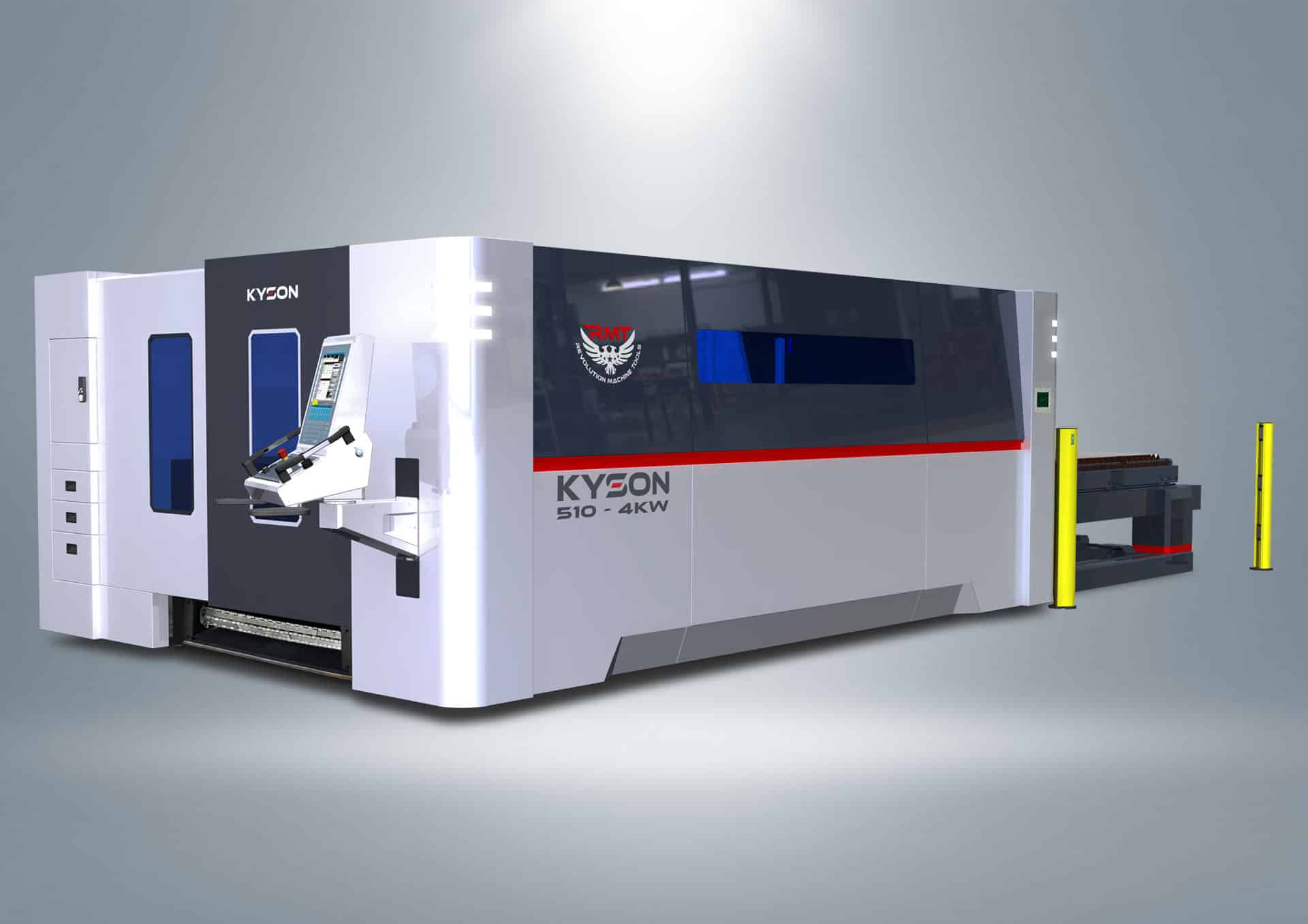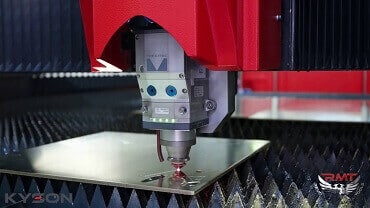Fiber Lasers vs. Traditional Metal Cutting Tools
No matter what type of metal fabrication is being performed in a shop, cutting the metal is almost guaranteed to be part of the process. From tin snips to band saws to CNC routers, cutting is a major function in the shaping of metal. Even a shop only forming prefabricated pieces is relying on people up the line cutting the metal into the workpieces they eventually fabricate.
Fiber lasers are—excuse the pun—the cutting edge of metal carving technology and have become an increasing common tool purchased by metal fabricators, both large and small. Some advantages they have over other types of metal cutting equipment include:
- Low operating costs, usually beating all other processes in cost per part.
- Extreme accuracy, precision and repeatability.
- High speed, especially for more complex cuts.
- High automation, where a sheet is loaded, a button pushed, and parts come out finished.
- Flexibility in not requiring tooling changes for different operations.
- Versatility in cutting different kinds of metals (and other types of material).
- Versatility in cutting different kinds of profiles with the technology, such as a tube-cutting laser that can slice intricate details into the sides of a round or square metal tube.
Most metal-cutting methods require physical contact of tooling with the workpiece. This results in wear to the tooling, requiring eventual replacement or sharpening. No such wear takes place in a fiber laser with its contactless cutting where only the beam touches the workpiece.
While punching is an extremely fast way to cut out metal, fiber lasers don’t require the cost of buying or changing out specialized tooling for the job at hand. The ability to cut very thin materials without distortion and less need of burr removal also give fiber lasers an edge over punches of all types.
Even other higher-tech forms of cutting have limitations when compared to fiber lasers:
- EDM cutting is precise, like fiber laser cutting, but it is much, much slower.
- Plasma cutting results in less accurate cuts with parts that require more deburring than fiber laser cutting.
- Waterjet cutting, while fast, is still slower that fiber laser cutting, and additional costs come into play with the use of abrasives, including nozzle wear and the handling and disposal of accumulated abrasive. Fiber lasers are also much quieter than waterjets.
Fiber Lasers vs. CO2 Lasers
The purchase and use of fiber lasers in the metal manufacturing industry have surpassed that of classic CO2 lasers in recent years for several reasons:
- Fiber lasers are more accurate because there is no beam diversion. CO2 lasers have more cut degradation due to frequent misalignment or contamination of mirrors. Fiber lasers have no mirrors to adjust or maintain.
- Fiber lasers are able to cut reflective materials like aluminum, brass and copper.
- Fiber lasers offer higher cutting speeds than CO2 lasers.
- Operational costs of fiber lasers are lower, with fiber lasers using only about one-third of the energy of other types of lasers.
- Fiber lasers don’t require excessive warm-up and cool-down times, leaving more time for production.
- Fiber lasers generate their beam with a diode that doesn’t require a blower, a vacuum and expensive gas like CO2 lasers.
- Maintenance is faster and easier and fiber lasers operate with far less downtime than CO2 and other types of lasers.
- Replacement parts for fiber lasers are far less expensive.
- Fiber lasers generally cost less than CO2 lasers.
Considerations When Buying and Using Fiber Lasers
In spite of all of the advantages of fiber laser cutting, a manufacturer or shop owner needs to take a serious look at many different considerations to determine if buying a fiber laser is the right choice for their operation in their current circumstances.
The major considerations are:
- Upfront cost of the machine. While the operational costs and the efficiency of fiber lasers will enable them to more than pay for themselves in the long run, they do sport a hefty price tag, often double that of other high-tech cutters like plasma or water jets.
- Hazards of laser cutting. Extra care must be taken with fiber laser cutting, from shielding users and bystanders from any reflected beams to providing an often-costly ventilation system to remove and process the dangerous fumes that result from vaporized metal.
- Limitations of fiber laser cutting. While an incredible technology for fast cutting sheet metal and thin to medium plate, fiber lasers are not always the right solution for thick plate fabrication. As with any process in metal fabrication, shop owners and operators need to make sure they match the tools to the tasks at hand.
- Necessity of skilled operators. The more complicated the machine, the more skill the operator must possess, and this is especially true with fiber lasers. A company that plans to purchase a fiber laser needs to also budget for the hiring or training of at least two operators for the machine so that a back-up is always available.
While metal-cutting fiber lasers can be dangerous machines, taking certain precautions can make their use fairly worry-free. Some safety tips include:
- Operators should never run the laser with the safety doors open.
- Operators and others in the area should wear safety glasses at all times.
- Operators and others should stay clear of the table and other moving parts during material handling operations.
- Operators must ensure that the chiller is running prior to the laser being engaged.
- Operators should never touch the laser lenses with bare hands and should always use recommended tools and cleaning processes when handling the optics.
- Only one operator at a time should handle the nozzle when centering it, and no one should be near the control panel during the process.
- Components of the fiber laser shouldn’t be mishandled or dropped and should be left to trained service technicians to remove or replace.
- The fiber laser must be completely powered down and never in operation while any maintenance is performed.
- All operators must read and understand the manual and all instructions from the manufacturer to guarantee a proper operation while avoiding problems that could cause harm to the machine or people.
- The recommended maintenance schedule for the machine should be followed to the letter and thorough inspections of the machine by trained service professionals should be scheduled on a regular basis.
The advantages of fiber laser cutting far outweigh any drawbacks for the owners and operators who are prepared to use this incredible technology properly and safely. A fiber laser can easily become the most used and most productive machine in any metal fabrication facility.







